This article needs additional citations for verification .(July 2022) |
Peter Biggs was the senior special effects technician for the movie Who Framed Roger Rabbit and a number of Hollywood films during the 1980s.
This article needs additional citations for verification .(July 2022) |
Peter Biggs was the senior special effects technician for the movie Who Framed Roger Rabbit and a number of Hollywood films during the 1980s.

Who Framed Roger Rabbit is a 1988 American fantasy comedy film directed by Robert Zemeckis from a screenplay written by Jeffrey Price and Peter S. Seaman. It is loosely based on the 1981 novel Who Censored Roger Rabbit? by Gary K. Wolf. The film stars Bob Hoskins, Christopher Lloyd, Stubby Kaye, and Joanna Cassidy, along with the voices of Charles Fleischer and an uncredited Kathleen Turner. Combining live-action and animation, the film is set in an alternate history Hollywood in 1947, where humans and cartoon characters co-exist. Its plot follows Eddie Valiant, a private investigator with a grudge against toons, who must help exonerate Roger Rabbit, a toon framed for murder.
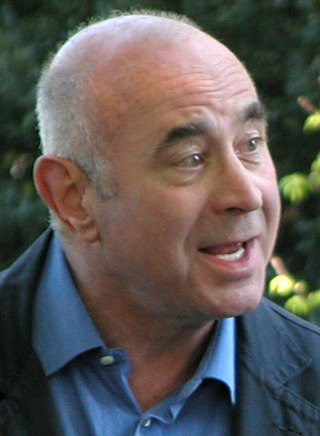
Robert William Hoskins was an English actor and film director. Known for his intense but sensitive portrayals of "tough guy" characters, he began his career on stage before making his screen breakthrough playing Arthur Parker on the 1978 BBC Television serial Pennies from Heaven. He subsequently played acclaimed lead roles in the films The Long Good Friday (1980), Mona Lisa (1986), Who Framed Roger Rabbit (1988), and Mermaids (1990).

Richard Edmund Williams was a Canadian-British animator, voice actor, and painter. A three-time Academy Award winner, he is best known as the animation director on Who Framed Roger Rabbit (1988) -- for which he won two Academy Awards -- and as the director of his unfinished feature film The Thief and the Cobbler (1993). His work on the short film A Christmas Carol (1971) earned him his first Academy Award. He was also a film title sequence designer and animator. Other works in this field include the title sequences for What's New Pussycat? (1965) and A Funny Thing Happened on the Way to the Forum (1966), title and linking sequences in The Charge of the Light Brigade, and the intros of the eponymous cartoon feline for two of the later Pink Panther films. In 2002 he published The Animator's Survival Kit, an authoritative manual of animation methods and techniques, which has since been turned into a 16-DVD box set as well as an iOS app. From 2008 he worked as artist in residence at Aardman Animations in Bristol, and in 2015 he received both Oscar and BAFTA nominations in the best animated short category for his short film Prologue.

Who Framed Roger Rabbit is an action-adventure video game created for the Nintendo Entertainment System by Rare and published by LJN in 1989. The single-player game is loosely based on the film of the same name and had combined elements of graphic adventure computer games with some more traditional action adventure gameplay. A different version of the game was also released for various computer systems in 1988.
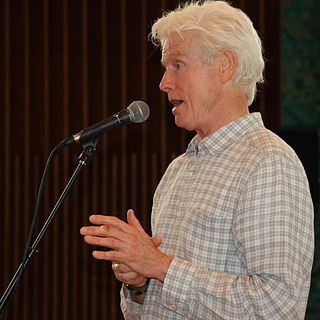
Frederick R. Newman is an American actor, comedian, composer, sound effects artist both in person and for film, singer and former talk show host. Newman is known for his ability to make ‘mouthsounds’ and is not a traditional Foley artist.
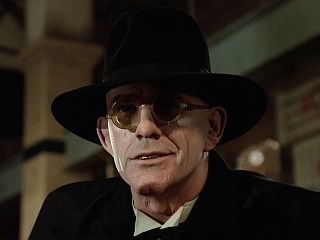
Judge Doom is a fictional character and the main antagonist in the 1988 film Who Framed Roger Rabbit, portrayed by Christopher Lloyd. He is depicted as the much-feared, cruel, and evil judge of Toontown, who later in the film is revealed as the mastermind behind the framing of the titular character and the murder of protagonist Eddie Valiant's brother.
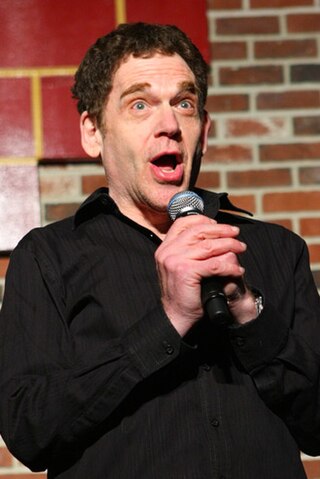
Charles Fleischer is an American actor, stand-up comedian, musician, and writer, best known for his recurring role as Carvelli in Welcome Back, Kotter, and for appearing in films such as Who Framed Roger Rabbit, A Nightmare on Elm Street, The Polar Express, Rango, Chip 'n Dale: Rescue Rangers, and We're Back! A Dinosaur's Story. He made a cameo in Back to the Future Part II and also reprised the role of Roger Rabbit in the Roger Rabbit theatrical shorts. After beginning his career on the comedy club circuit, Charles Fleischer's first big break in comedy television came when he made an appearance on Rowan & Martin's Laugh-In.

Roger Rabbit's Car Toon Spin is a dark ride located at the Disneyland and Tokyo Disneyland theme parks, based on the 1988 Disney/Amblin film Who Framed Roger Rabbit. Both versions of the attraction are located in Mickey's Toontown. The Disneyland version opened on January 26, 1994, a year after the Mickey's Toontown area opened, and the Tokyo Disneyland version opened on April 15, 1996. In December 2021, the Disneyland version was updated to include a new plot element of Jessica Rabbit in the role of a detective who is determined to stop a crime wave in Toontown.

Supersize means "larger than average or standard sizes; extremely large". The phrase was particularly used by McDonald's restaurants to upsize their French fries and soft drinks to an extra-large size. In the United States, McDonald's introduced the supersized option in the summer of 1987.
Tom Bertino is a professional animator, formerly Animation Director and Visual Effects Supervisor at Industrial Light & Magic.
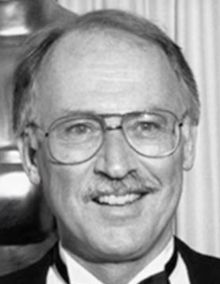
Arthur Robert Schmidt was an American film editor with about 27 film credits between 1977 and 2005. Schmidt had an extended collaboration with director Robert Zemeckis from the Back to the Future film trilogy (1985–1990) to Cast Away (2000).
Kenneth Ralston is an American visual effects artist, currently the Visual Effect Supervisor and Creative Head at Sony Pictures Imageworks. Ralston began his career at the commercial animation and visual effects company, Cascade Pictures in Hollywood, where he worked on over 150 advertising campaigns in the early 1970s. In 1976, he was hired at Industrial Light & Magic by Dennis Muren to help George Lucas create the effects for Star Wars. He remained at ILM for 20 years before joining Sony Pictures Imageworks as president. Ralston is best known for his work in the films of Robert Zemeckis.

The 1988 film Who Framed Roger Rabbit has provided the basis for a media franchise including books, animated shorts, comic books and a video game.
Jeffrey Lawrence Price and Peter Stewart Seaman are an American screenwriting and producing duo whose notable works include Trenchcoat (1983), Who Framed Roger Rabbit (1988), Doc Hollywood (1991), Wild Wild West (1999), How the Grinch Stole Christmas (2000), Last Holiday (2006) and Shrek the Third (2007).
The Roger Rabbit shorts are a series of three animated short films produced by Walt Disney Feature Animation from 1989 to 1993. They feature Roger Rabbit, the animated protagonist from Who Framed Roger Rabbit (1988), being enlisted the task of caring for Baby Herman while his mother is absent, resulting in a plot defined by slapstick humor and visual gags. Each short concludes with a sequence involving live-action and animation, in which the characters interact with live-action human beings, akin to the 1988 film. Droopy Dog from MGM makes a cameo in all of the shorts.

George Gibbs was a British special effects artist who is best known for his work in Indiana Jones and the Temple of Doom, Who Framed Roger Rabbit and Indiana Jones and the Last Crusade.
Clayton Willis Pinney was an American special effects artist who has won an Academy Award for visual effects as well as an Academy Award for Technical Achievement. His name was mentioned at the 95th Academy Awards in the In Memorian section.
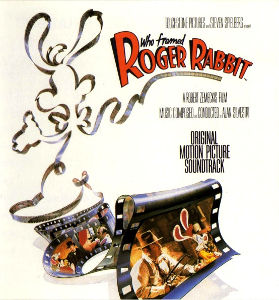
Who Framed Roger Rabbit (Original Motion Picture Soundtrack) is the soundtrack album to the 1988 film Who Framed Roger Rabbit, directed by Robert Zemeckis and featured film score composed by regular Zemeckis collaborator Alan Silvestri, who conducted the London Symphony Orchestra. The musical score was heavily influenced on Carl W. Stalling's music composed for Looney Tunes. Apart from Silvestri's score, the film also features performances of "Hungarian Rhapsody", "Why Don't You Do Right?" by Amy Irving as Jessica Rabbit, "The Merry-Go-Round Broke Down" by Charles Fleischer as Roger Rabbit, and a choral version of "Smile, Darn Ya, Smile!" performed by the Toons.

Live-action animation is a film genre that combines live-action filmmaking with animation. Projects that are both live-action and computer-animated tend to have fictional characters or figures represented and characterized by cast members through motion capture and then animated and modeled by animators. Films that are live-action and traditionally animated use hand-drawn, computer-generated imagery (CGI), or stop-motion animation.
Edward Jones is an American producer and visual effects artist. He won an Academy Award in the category Best Visual Effects for the film Who Framed Roger Rabbit.